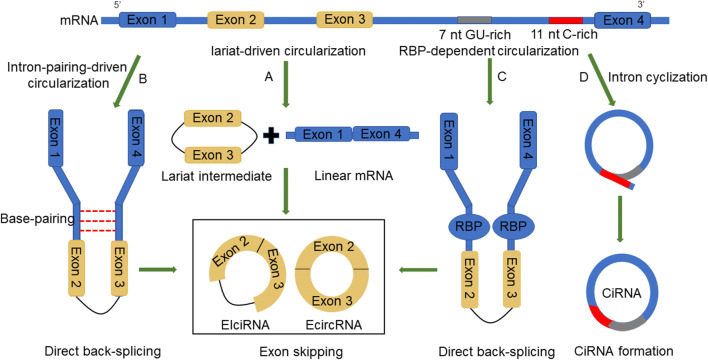Fig. 1.
Biogenesis of circRNAs: four models explain circRNA formation. a Lariat-driven circularization first generates a lariat intermediate in which the 5′ end donor of an exon binds to the 3′ end acceptor of another exon and subsequently forms an ecircRNA by removing the introns between the exons. b Intron pairing-driven circularization begins with cyclization with the aid of reverse complementary sequences and thus generates an EIciRNA or ecircRNA via intron removal. c RBP-driven circularization starts with back-splicing, and then the flanking introns bind to each other closely with the aid of RBPs, resulting in the formation of a circRNA. d CiRNA formation is dependent on the conserved sequence near both sides of the spliceosome. The conserved sequence assists the intronic lariat to evade degradation by debranching enzymes

